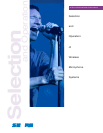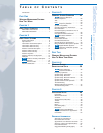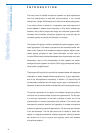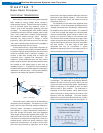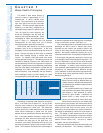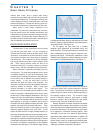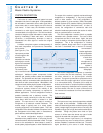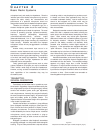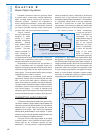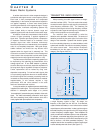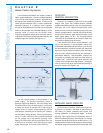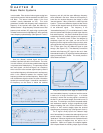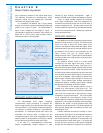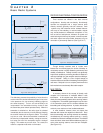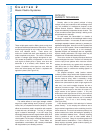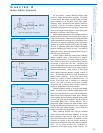
ambient radio "noise," that is, general radio energy
produced by many natural and man-made sources across
a wide range of frequencies. The strength of ambient radio
noise is relatively constant in a given area, that is, it does not
diminish with distance. The total radio field at a given loca-
tion consists of direct waves, indirect waves and radio noise.
Radio noise is nearly always considered to be
undesirable. The direct and indirect waves may come from
both the desired source (the intended transmission) and
undesirable sources (other transmissions and general radio
energy emitters). Successful radio reception depends on a
favorable level of the desired transmission compared to the
level of undesirable transmissions and noise.
RADIO WAVE MODULATION
This discussion of radio transmission has so far dealt
only with the basic radio wave. It is also necessary to
consider how information is carried by these waves. Audio
"information" is transmitted by sound waves which consist
of air pressure variations over a large range of amplitudes
and frequencies. This combination of varying amplitudes
and varying frequencies creates a highly complex sound
field. These varying pressure waves are able to be
processed directly by our auditory systems to perceive
speech, music, and other intelligible sounds (information).
Radio "information" is generally transmitted using only
one frequency. This single electromagnetic wave is varied
in amplitude, frequency, or some other characteristic (such
as phase) and for most radio transmissions neither the wave
nor its variation can be detected or processed directly by
human senses. In fact, the wave itself is not the
information but rather the "carrier" of the information. The
information is actually contained in the amplitude variation or
frequency variation, for example. When a radio wave
contains information it is called a radio "signal." The
general term for this information-carrying variation of radio
waves is "modulation." If the amplitude of the wave is varied
the technique is called Amplitude Modulation or AM. If the
frequency is varied, it is called Frequency Modulation or FM.
The amount of information that can be carried in a radio
signal depends on the type of modulation and the level of
modulation that can be applied to the basic radio wave. It also
depends on the frequency of the basic radio wave. These
factors are limited by physics to some extent, but are also
limited by regulatory agencies such as the FCC. For AM
signals, the radio wave has a single (constant) frequency of
some basic amplitude (determined by the transmitter power).
This amplitude is varied up and down (modulated) by the
audio signal to create the corresponding radio signal. The rate
of modulation is equal to the frequency of the audio signal and
the amount of modulation is proportional to the amplitude
(loudness) of the audio signal. The maximum (legal) amount
of amplitude modulation allows an audio signal of only limited
frequency response (about 50-9000 Hz) and limited dynamic
range (about 50 dB). (See Figure 1-6.)
For FM signals, the radio wave has a constant
amplitude (again determined by transmitter power) and
a basic frequency. The basic radio frequency is varied up and
down (modulated) by the audio signal to create the corre-
sponding radio signal. This frequency modulation is called
"deviation" since it causes the carrier to deviate up and down
from its basic or unmodulated frequency. (See Figure 1-7.)
The amount of deviation is a function of the amplitude
of the audio signal and is usually measured in kilohertz
(KHz). Typical values of deviation in wireless microphone
systems range from about 12KHz to 45KHz depending on
the operating frequency band. The maximum (legal)
amount of deviation allows an audio signal of greater
frequency response (about 50-15,000 Hz) and greater
dynamic range (more than 90 dB) than does AM.
Although the details of wireless microphone transmitters
and receivers will be covered in the next section, it should be
noted here that all of the systems discussed in this presenta-
tion use the FM technique. The reasons for this are the same
as are apparent in commercial broadcast systems. More
"information" can be sent in the typical FM signal, allowing
higher fidelity audio signals to be transmitted. In addition, FM
receivers are inherently less sensitive to many common
sources of radio noise, such as lightning and electrical power
equipment. These sources are characterized by a high level
of AM-type noise which is rejected by FM systems.
7
Selection
and Operation
of Wireless Microphone Systems
C HAPTER 1
Basic Radio Principles
Figure 1-6: amplitude modulation (AM)
Figure 1-7: frequency modulation (FM)



